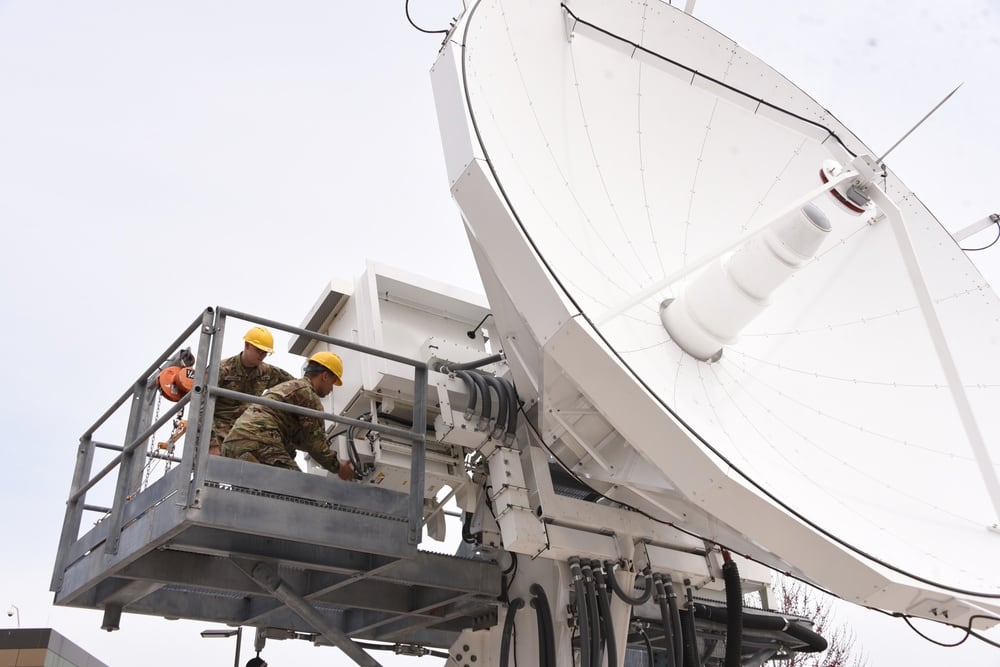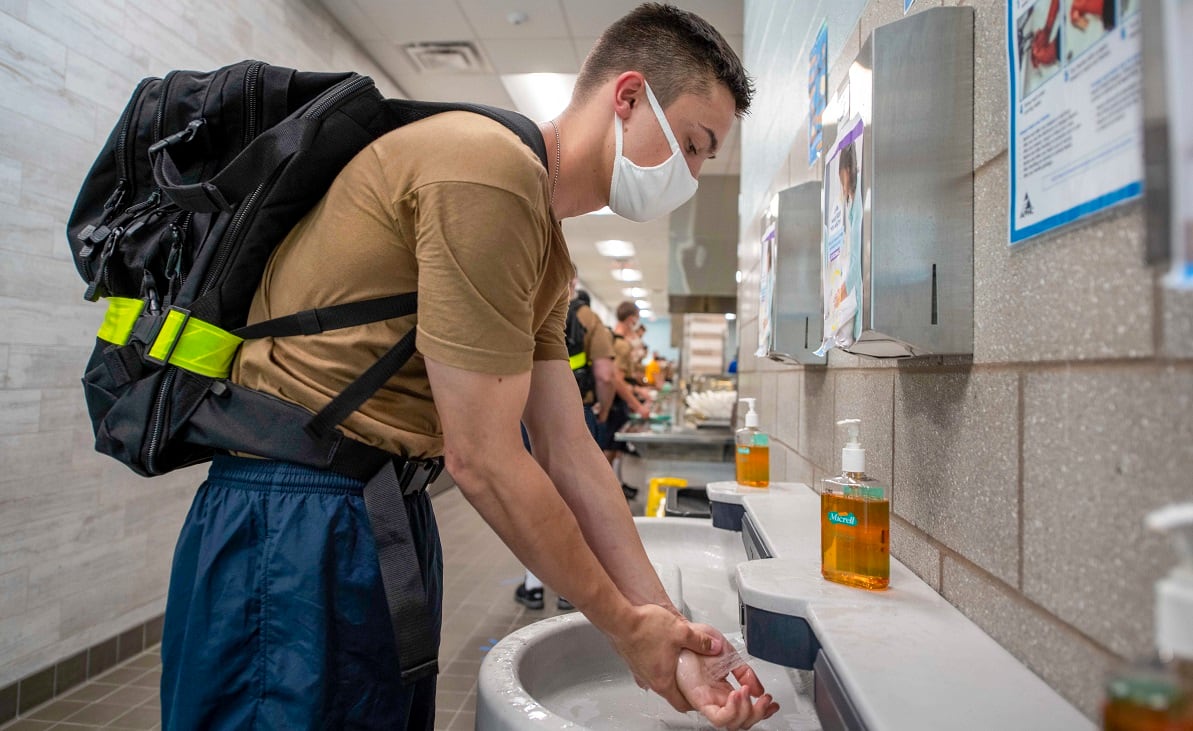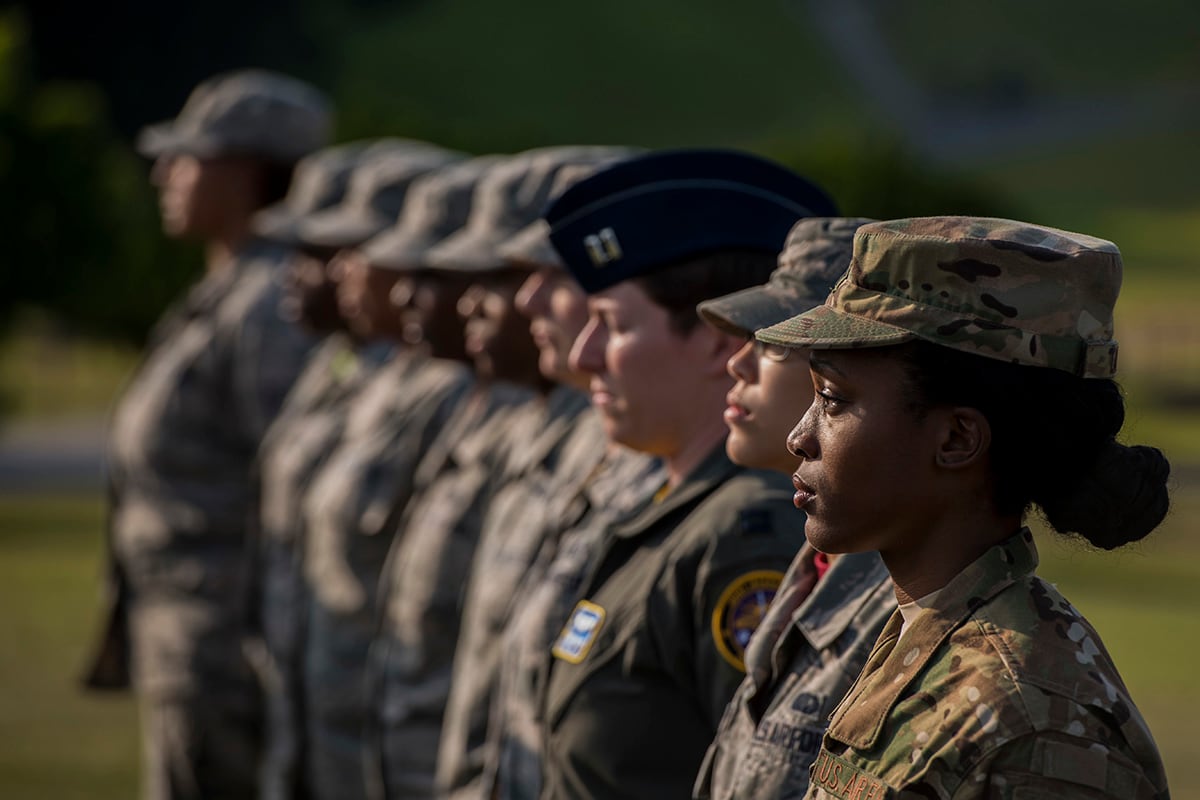The Air Force this week said it hit its service-wide recruiting and staffing goals for the first time in five years, despite continued worries about declining interest in military service among American youth.
Officials attribute their success in fiscal 2021 to multiple factors: among them, booming retention during the coronavirus pandemic, as well as the hope that they’re creating an environment where people want to join and stay.
“I’m optimistic, but at the same time … the long-term trends are very concerning,” Air Force Recruiting Service boss Maj. Gen. Ed Thomas told reporters Sept. 22 at the Air Force Association’s annual Air, Space and Cyber Conference at National Harbor, Maryland. “America’s youth are becoming ever [more] disconnected from the military.”
RELATED

The active-duty Air Force hoped to employ about 327,000 service members in fiscal 2021, and gained about 27,300 airmen to meet that mark, the Air Force Recruiting Service said in a Thursday release. That includes 26,641 enlisted airmen and 658 officers.
One particular bright spot: the service’s special warfare recruiters reached their goal for the explosive ordnance disposal field for the first time in 10 years — though there’s more work to do to broaden the pool of potential special operations airmen.
The Air National Guard, aiming for 108,100 troops in total, brought in 7,869 enlisted troops and 755 officers. And about 7,300 enlisted airmen and 1,500 officers joined the Air Force Reserve, to meet its end-strength goal of 70,300 military personnel.
Those wins are tied to hefty enlistment bonuses for certain fields, such as $15,000 to join the special warfare enterprise, and to a new recruiting approach where offices are one-stop shops for figuring out whether active-duty, Guard or Reserve is the right fit.
Despite a trying year for the Guard, its top officer, Lt. Gen. Michael Loh, said people are staying in because they believe in their missions — which have recently spanned bolstering hospitals and administering vaccines during the coronavirus pandemic, natural disaster response, security at protests and potential flashpoints around the country, and more typical combat operations.
Economic uncertainty hasn’t factored in much, he added: “Our members aren’t having an unemployment issue.”
The active-duty Space Force hit its mark as well. The youngest military branch included 6,490 uniformed guardians as of Sept. 21, and brought in about 400 new guardians in the past year — all but nine of whom are enlisted. The youngest military branch doesn’t currently have its own Guard or Reserve units, and relies on space personnel who are still in the Air Force to do those jobs.
Because the Space Force is a fraction of the size of the other armed forces — its end-strength is about 5 percent of the Marine Corps, the next-largest service at around 180,000 active-duty troops — officials pledge to be more purposeful about seeking out talent and having a more personalized, holistic review process to join than in the other branches.
Two dozen recruiters dedicated to the Space Force are now spread out across the U.S. as the service looks to grow to 8,400 active-duty guardians in 2022.
RELATED

Still, interest in serving in the military has fallen to about 11 percent among eligible Americans, Thomas said. Previous ways of attracting prospective recruits, such as television ads of airstrikes and pararescuemen leaping from planes, are losing steam as well.
A fall 2020 Defense Department study of about 3,300 Americans between the ages of 16 and 21 found that only 2 percent of those polled would “definitely” serve in the military in the next few years, and 9 percent would “probably” serve. Both have remained generally flat over the past 20 years.
Thirty-six percent of respondents said they would “probably not” serve — a slight uptick since the beginning of 2020 — while the group who would “definitely not” serve shrank to 52 percent.
While money was the top reason given for why someone would join the military, “to help others” came in fourth. Respondents worried about the possibility of injury, post-traumatic stress disorder or death, sexual harassment and assault, and leaving family and friends behind.
RELATED

The Air Force looks to pivot to marketing that offers a supportive, fulfilling job for people of any gender, and younger Americans who want their job to align with their moral code. It also has to answer people’s most basic questions: Can I date in the military? Can I have a dog?
“A lot of our youth out there, they don’t understand,” Thomas said. “They don’t know who we are and what we do, let alone this incredibly meaningful opportunity to serve and the value proposition that comes along with it.”
That only 33 percent of young people polled said joining the military could help them positively impact their community may reflect that disconnect in values, particularly after a tumultuous 2020 marked by America’s reckoning on racial equity and concerns over improper use of military assets in civilian spaces.
“The data shows us that the racial division in our nation has done damage to our recruiting efforts,” Thomas said of polarization over pivotal events of 2020. “Yes, it’s George Floyd. Yes, it’s Lafayette Park.”
But the death of George Floyd, a Black man who died after a white Minneapolis police officer knelt on his neck for nearly nine minutes, has spurred the Air Force to double down on efforts to diversify and tackle discrimination in its ranks.
RELATED

Last year, the Air Force pledged to pursue recruiting targets that reflect the demographic makeup of America without sacrificing quality. That has boosted efforts to woo people in underrepresented communities like Asian Americans, who make up nearly 10 percent of qualified Americans but comprise only 4 percent of the Air Force.
Black men, Hispanic men, and women of any race or ethnicity —among the people the Air Force is trying most to recruit — have shown the greatest decline in interest in military service. Greater outreach in minority communities and diverse science and technology programs could help, and Thomas wants to build a recruiting force that mirrors the people it wants to bring in.
Recruiters also hope to reach broader groups of people through digital tools like Zoom, which lets them talk to hundreds of prospects at a time, or click-to-sign technology to make military paperwork easier.
The Air National Guard is exploring how people could apply to join online, as is common through websites like LinkedIn or USAJobs.
“It takes 80 pieces of paper to get a member into the Air National Guard. You can go apply for anybody else online. We haven’t figured that out,” Loh said.
RELATED

The Air Force is still figuring out how to better keep out the people it doesn’t want, too.
Shawn McCaffrey, a prominent white nationalist who joined the Air Force in January and graduated from basic training, was kicked out after a HuffPost investigation revealed that the military hadn’t flagged his publicly racist and anti-Semitic affiliations. The Pentagon pledged to crack down on ideological extremism after a right-wing mob stormed the U.S. Capitol on Jan. 6.
Thomas said the Recruiting Service now asks whether someone has ever been associated with an extremist organization or gang, encourages recruiters to watch for troubling signs during interviews, and is learning more about what tattoos and other hate symbols might fly under the radar — for example, using “88″ to signify “Heil Hitler.”
They still believe the most effective way to screen social media is through background checks and other intelligence processes, not by having recruiters handle it themselves.
“While a recruiter may look at somebody’s Facebook page, they may not know some anonymous Twitter handle or what they’re posting on Reddit,” Thomas said. “Somebody’s potential extremist tendencies on social media may not be all that obvious to the staff sergeant sitting in the recruiting office in Las Vegas.”
Rachel Cohen is the editor of Air Force Times. She joined the publication as its senior reporter in March 2021. Her work has appeared in the Washington Post, the Frederick News-Post (Md.), Air and Space Forces Magazine, Inside Defense, Inside Health Policy and elsewhere.





